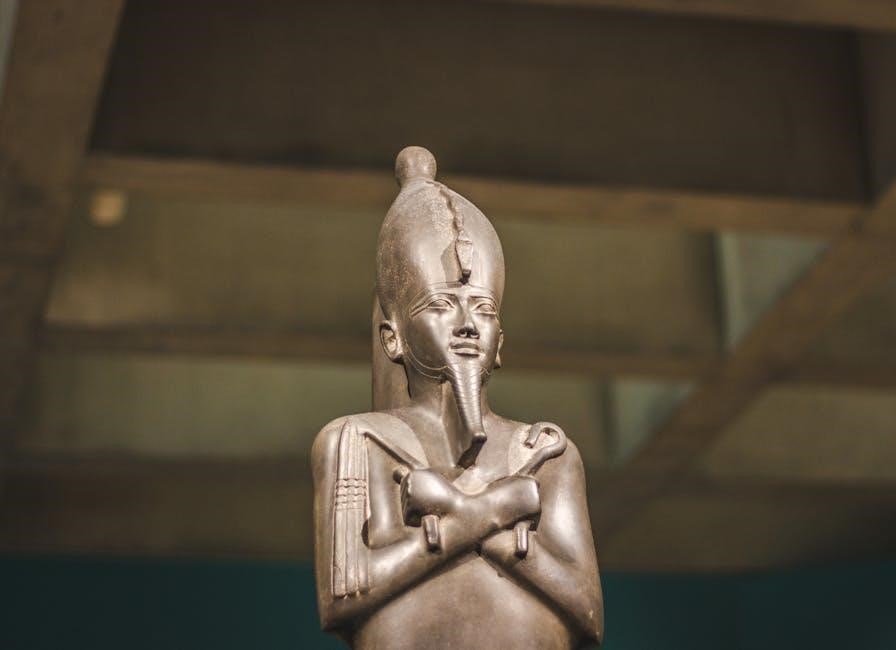Return of the God Hypothesis: Article Plan
Stephen Meyer’s “Return of the God Hypothesis” explores scientific evidence suggesting God’s existence. Meyer challenges the notion of conflict between science and theism. The book examines discoveries in cosmology, physics, and biology. It builds on Meyer’s previous work regarding intelligent design.
Stephen Meyer’s “Return of the God Hypothesis” presents a compelling case for the existence of God, drawing upon groundbreaking scientific discoveries across various fields. Meyer challenges the long-held “conflict thesis,” which posits an inherent antagonism between scientific knowledge and traditional theistic beliefs. He argues that, contrary to this view, certain scientific advancements actually lend support to theistic conclusions.
The book builds upon Meyer’s previous works, “Signature in the Cell” and “Darwin’s Doubt,” which focused on the evidence for intelligent design in the realm of biology. In “Return of the God Hypothesis,” Meyer expands his scope to include cosmology and physics, demonstrating how discoveries in these fields, coupled with those in biology, contribute to a more complete picture of the universe’s origins and nature. He contends that these scientific findings point towards the existence of a designing intelligence behind the universe, challenging purely naturalistic explanations.
Meyer examines three key scientific discoveries with theistic implications: the Big Bang theory, the fine-tuning of the universe for life, and the origin of life and biological information. Through a detailed analysis of these discoveries, Meyer aims to demonstrate that the God hypothesis is not only compatible with scientific evidence but also provides a more plausible explanation than competing naturalistic hypotheses.
The Conflict Thesis: Science vs. Theism
The “conflict thesis,” a prevalent idea since the late 19th century, asserts that science and theism are fundamentally at odds. This viewpoint suggests that scientific advancements inevitably erode the foundations of religious belief, portraying science and faith as opposing forces vying for intellectual dominance. Proponents of the conflict thesis often argue that scientific explanations for natural phenomena displace the need for supernatural or divine intervention.
Stephen Meyer directly challenges this thesis in “Return of the God Hypothesis.” He argues that the conflict thesis is an oversimplification of the complex relationship between science and theism. Meyer contends that certain scientific discoveries, rather than undermining theistic beliefs, actually provide evidence that aligns with and supports theistic perspectives. He points out that many scientists throughout history have been motivated by their religious beliefs and that science itself can be seen as a means of exploring and understanding God’s creation.
Meyer suggests that the perceived conflict often arises from philosophical interpretations of scientific findings rather than the scientific data itself. He advocates for a more nuanced approach, where science and theism can be seen as complementary ways of understanding the universe, each offering unique insights and perspectives. By examining specific scientific discoveries, Meyer aims to demonstrate that the conflict thesis is not only inaccurate but also hinders a more comprehensive understanding of reality.
Three Scientific Discoveries with Theistic Implications
Stephen Meyer, in “Return of the God Hypothesis,” highlights three pivotal scientific discoveries that he argues have significant theistic implications. These discoveries, according to Meyer, challenge purely naturalistic explanations of the universe and lend credence to the idea of a designing intelligence. The first of these is the Big Bang cosmology, which posits that the universe had a definite beginning, suggesting a cause beyond the natural realm.
Secondly, Meyer discusses the fine-tuning of the universe for life. The fundamental constants and physical laws of the universe appear to be exquisitely balanced to allow for the existence of life, a degree of precision that seems highly improbable by chance alone. This fine-tuning, Meyer argues, points towards a deliberate design rather than random occurrence.

Finally, Meyer examines the origin of life and the emergence of biological information. He contends that the complexity and specificity of DNA, along with the intricate information processing systems within cells, are difficult to explain through purely materialistic processes. The vast amount of coded information in living organisms, he argues, suggests an intelligent source capable of generating such complexity. These three discoveries, Meyer asserts, collectively provide a compelling case for considering the existence of God as a viable explanation for the universe and life within it.
Cosmology and the Big Bang Theory
The Big Bang theory, a cornerstone of modern cosmology, proposes that the universe originated from an extremely hot, dense state approximately 13.8 billion years ago. This theory, supported by extensive evidence such as the cosmic microwave background radiation and the expansion of the universe, has profound implications for our understanding of existence. Stephen Meyer, in “Return of the God Hypothesis,” argues that the Big Bang provides a compelling scientific basis for theistic belief.
Prior to the Big Bang, there was no space, time, or matter as we know it. The universe had a definite beginning, suggesting a cause beyond the natural realm. This contrasts with earlier models of an eternal, self-existent universe, which obviated the need for a creator. The Big Bang, however, implies a transcendent origin, raising questions about the source of this initial singularity.
Meyer contends that the Big Bang challenges purely naturalistic explanations. If the universe had a beginning, then what caused it to come into existence? While some physicists propose multiverse theories or other speculative models to avoid a singular origin, Meyer argues that these proposals lack empirical support and often involve metaphysical assumptions. He suggests that the Big Bang, rather than disproving the existence of God, provides scientific evidence consistent with the idea of a divine creator who initiated the universe.
Fine-Tuning of the Universe for Life
The fine-tuning of the universe refers to the astonishing precision of physical constants and laws that allow for the existence of life; Numerous parameters, such as the gravitational constant, the electromagnetic force strength, and the mass of elementary particles, must fall within extremely narrow ranges for a life-supporting universe to exist. Even slight deviations would render the universe sterile, devoid of stars, planets, or any complex chemistry.
Stephen Meyer, in “Return of the God Hypothesis,” highlights the fine-tuning of the universe as compelling evidence for intelligent design. He argues that the probability of these parameters randomly aligning to permit life is astronomically small, effectively ruling out chance as a plausible explanation. Naturalistic explanations, such as the multiverse hypothesis, which posits the existence of countless universes with different physical constants, are often invoked to address the fine-tuning problem. However, Meyer critiques these explanations as speculative and untestable.
He contends that the fine-tuning of the universe points to a deliberate design by an intelligent agent. The precise calibration of the universe for life suggests a purpose, an intention behind the fundamental laws of nature. This perspective aligns with theistic belief, which posits a creator God who intentionally designed the universe to support life. Meyer argues that the fine-tuning evidence provides strong support for the “God hypothesis” as the best explanation for the observed universe.
The Origin of Life and Biological Information
The origin of life, specifically the emergence of the first self-replicating cell from non-living matter, presents a significant challenge to naturalistic explanations. This transition requires the spontaneous generation of complex biological information encoded in DNA and RNA, which directs the synthesis of proteins and other essential molecules. The sheer complexity and specificity of this information pose a problem for purely random processes.
Stephen Meyer, in “Return of the God Hypothesis,” emphasizes the role of specified complexity in biological systems. He argues that the information encoded in DNA is not merely complex but also specified, meaning it exhibits a particular arrangement that serves a specific function. This combination of complexity and specificity is indicative of intelligent design, as it resembles the kind of information produced by human intelligence.
Meyer critiques naturalistic theories, such as chemical evolution, which attempt to explain the origin of life through self-organization and natural selection acting on random variations. He argues that these theories fail to account for the origin of the vast amount of specified information necessary for the first living cell. The challenge lies in explaining how unguided chemical processes could generate the precise sequences of nucleotides in DNA that encode functional proteins. The “God hypothesis,” according to Meyer, provides a more plausible explanation, suggesting that an intelligent agent intentionally designed the biological information necessary for life to arise.
Intelligent Design as an Explanation
Intelligent Design (ID) posits that certain features of the universe and living organisms are best explained by an intelligent cause, not undirected processes such as natural selection. This explanation arises from the observation of specified complexity, a hallmark of intelligently designed systems. Proponents of ID, like Stephen Meyer, argue that the intricate and functionally specific information found in DNA, the fine-tuning of the universe’s physical constants, and the abrupt appearance of novel biological forms in the fossil record point towards intelligent agency.

Meyer, in “Return of the God Hypothesis,” presents ID as a viable scientific hypothesis, contrasting it with purely naturalistic explanations. He asserts that ID is not simply a “God-of-the-gaps” argument, but rather a positive case based on empirical evidence and inference to the best explanation. The core of the argument lies in the ability of intelligent agents to generate complex and specified information, a capacity not observed in purely natural processes.
ID does not specify the identity of the designer, leaving open the possibility of various intelligent agents. However, Meyer argues that the scope and nature of the design evident in the universe and life point towards a transcendent intelligence, aligning with traditional theistic conceptions of God. The fine-tuning of cosmological constants, for instance, suggests a level of foresight and precision that transcends the capabilities of any known natural process, further bolstering the case for an intelligent designer behind the universe and life itself.
Meyer’s Critique of Naturalistic Explanations
Stephen Meyer, in “Return of the God Hypothesis,” systematically critiques naturalistic explanations for the origin of life, the fine-tuning of the universe, and the Cambrian explosion. He argues that these phenomena exhibit characteristics that are not readily explained by purely materialistic or natural processes. Meyer contends that naturalistic explanations often fall short in accounting for the specified complexity and information content observed in biological systems and cosmological constants.
Specifically, Meyer challenges the adequacy of chemical evolution scenarios for the origin of life, highlighting the immense improbability of generating functional proteins and DNA sequences through random chance and natural selection. He points out that the information encoded in DNA is analogous to computer code, which is invariably the product of intelligent design. Meyer also questions the ability of natural selection to generate the novel body plans that appeared during the Cambrian explosion, arguing that the required mutations and coordinated developmental changes are far too complex to arise through undirected processes.
Furthermore, Meyer scrutinizes multiverse theories proposed as a naturalistic explanation for the fine-tuning of the universe. He argues that these theories lack empirical support and often rely on untestable assumptions. Meyer suggests that invoking an infinite number of universes to explain the improbable conditions necessary for life is an ad hoc attempt to avoid the implications of a finely tuned cosmos, which strongly suggests an intelligent designer who intentionally set the universe’s parameters to allow for life’s existence.
Reception and Reviews of the Book

Stephen Meyer’s “Return of the God Hypothesis” has garnered significant attention and sparked diverse reactions from scientific, philosophical, and theological communities. The book’s central thesis, proposing intelligent design as a viable explanation for certain scientific observations, has been met with both praise and criticism. Some reviewers have lauded Meyer for his rigorous analysis, comprehensive research, and clear articulation of complex scientific concepts. They appreciate his challenge to purely naturalistic explanations and his willingness to explore theistic alternatives.
Conversely, the book has faced criticism from those who argue that it promotes pseudoscience and undermines the established scientific consensus. Critics contend that Meyer’s arguments rely on misrepresentations of evolutionary theory and lack empirical support for intelligent design. They maintain that naturalistic explanations, while not fully complete, offer a more parsimonious and scientifically sound framework for understanding the origin and development of life and the universe.
Despite the controversy, “Return of the God Hypothesis” has enjoyed considerable commercial success, becoming a bestseller and generating widespread discussion. Its reception reflects the ongoing debate surrounding the relationship between science and religion, and the enduring questions about the ultimate nature of reality. The book has undoubtedly stimulated further inquiry and reflection on the implications of scientific discoveries for our understanding of the universe and our place within it. It was also chosen as one of World magazine’s 2021 books of the year.
Implications for Science and Religion Dialogue

Stephen Meyer’s “Return of the God Hypothesis” presents significant implications for the ongoing dialogue between science and religion. The book reignites discussions about the compatibility of scientific inquiry and theistic belief, challenging the widely held view that science necessarily leads to naturalism or atheism. Meyer’s arguments suggest that certain scientific findings, particularly in cosmology, fine-tuning, and the origin of life, may be more readily explained by the existence of a designing intelligence.
This perspective encourages a re-evaluation of the relationship between scientific evidence and philosophical or theological interpretations. It prompts scientists and theologians alike to consider the potential for consonance between scientific discoveries and religious perspectives. The book also highlights the limitations of purely materialistic explanations and encourages a more open-minded approach to exploring alternative hypotheses, including those with theistic implications.
Furthermore, “Return of the God Hypothesis” underscores the importance of interdisciplinary dialogue. It calls for scientists, philosophers, and theologians to engage in constructive conversations, fostering a deeper understanding of the complex questions at the intersection of science and religion. While the book’s arguments may not be universally accepted, they undoubtedly stimulate critical thinking and encourage a more nuanced appreciation of the multifaceted relationship between scientific knowledge and religious belief, potentially bridging divides and fostering mutual respect in the pursuit of truth.
In conclusion, Stephen Meyer’s “Return of the God Hypothesis” presents a compelling argument for reconsidering the role of theism in scientific explanations. By examining key discoveries in cosmology, the fine-tuning of the universe, and the origin of life, Meyer challenges the prevailing naturalistic worldview and proposes that the existence of a designing intelligence offers a more coherent and plausible explanation for certain phenomena. The book does not aim to prove God’s existence definitively, but rather to demonstrate that the God hypothesis is a scientifically viable and intellectually respectable option.
Meyer’s work encourages a re-evaluation of the relationship between science and religion, suggesting that they need not be in perpetual conflict. Instead, he argues that scientific evidence can, in certain instances, point towards the existence of a transcendent reality. While his arguments are sure to provoke debate and discussion, “Return of the God Hypothesis” serves as a valuable contribution to the ongoing conversation about the nature of reality, the limits of scientific inquiry, and the potential for integration between scientific and theological perspectives.
Ultimately, the book invites readers to critically examine their own assumptions about the relationship between science and faith, and to consider the possibility that the God hypothesis, once relegated to the realm of philosophical speculation, may indeed have a place in the ongoing quest for scientific understanding. It marks a significant moment in the science-religion dialogue, prompting further exploration and debate in the years to come.

